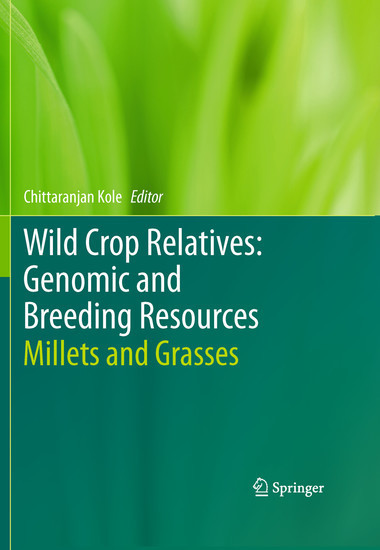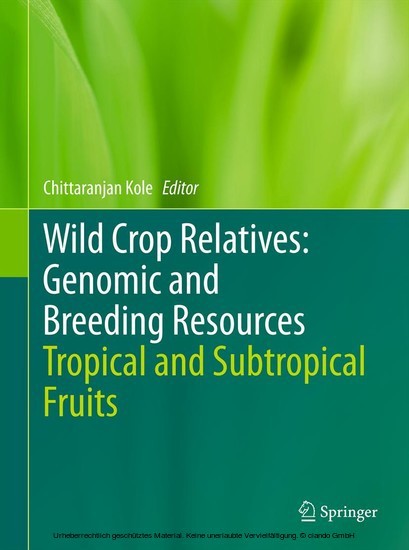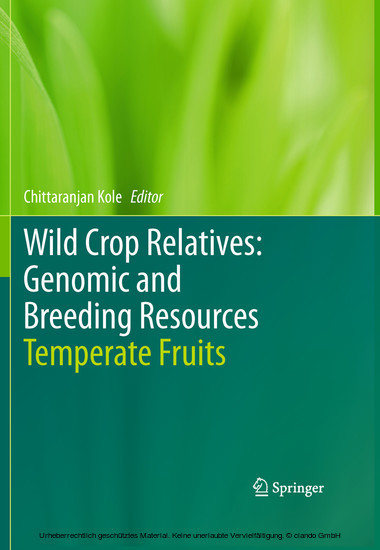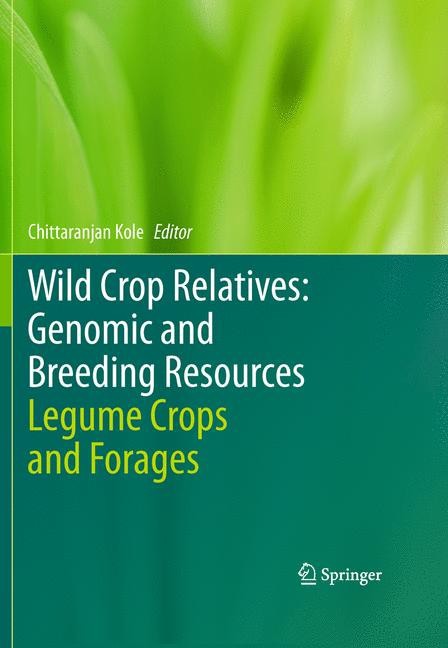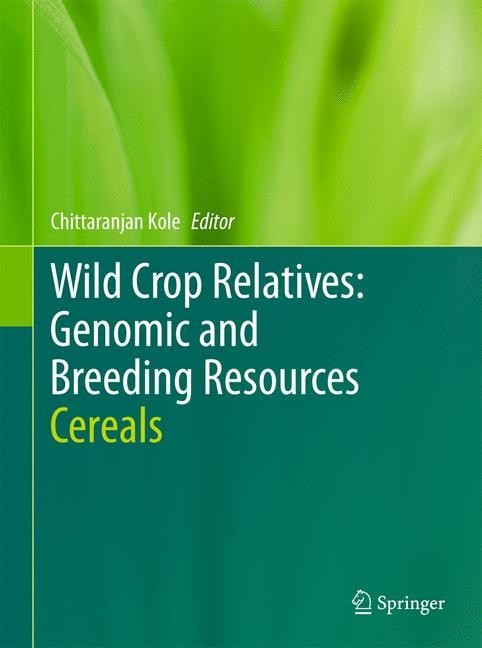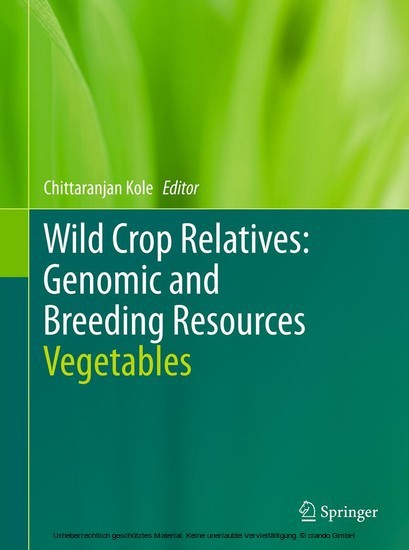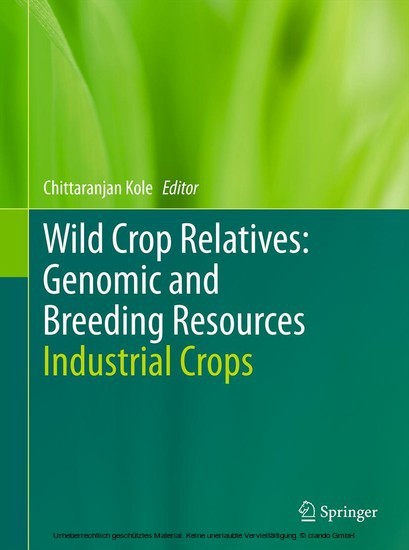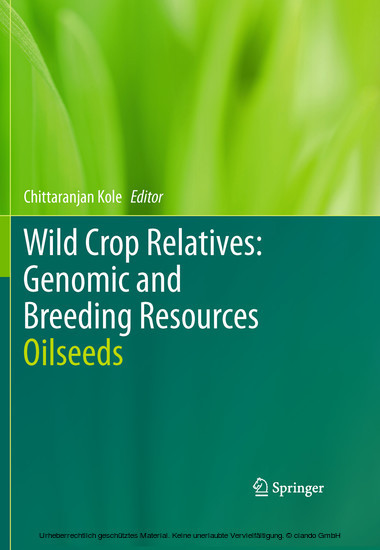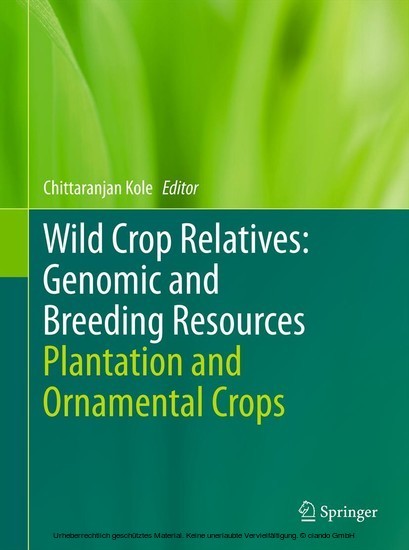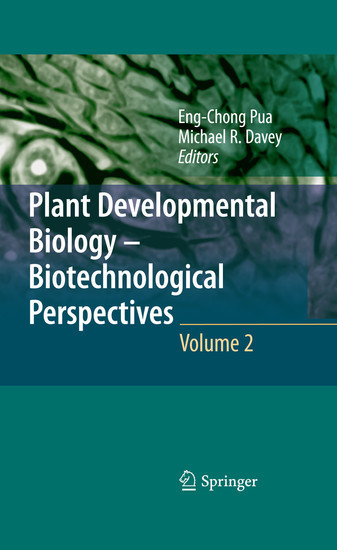Wild Crop Relatives: Genomic and Breeding Resources
Wild crop plants play a significant part in the elucidation and improvement of the genomes of their cultivated counterparts. The 10-volume Wild Crop Relatives: Genomic and Breeding Resources offers a comprehensive examination of wild crops as a gold mine for breeding. It details the status, origin, distribution, morphology, cytology, genetic diversity and available genetic and genomic resources of numerous wild crop relatives, as well as of their evolution and phylogenetic relationship. Further topics include their role as model plants, genetic erosion and conservation efforts, and their domestication for the purposes of bioenergy, phytomedicines, nutraceuticals and phytoremediation.
Wild Crop Relatives: Genomic and Breeding Resources comprises 10 volumes on cereals, millets and grasses, oilseeds, legume crops and forages, vegetables, temperate fruits, tropical and subtropical fruits, industrial crops, plantation and ornamental crops, and forest trees. It contains 126 chapters contributed by 380 authors from 39 countries.
1;Wild Crop Relatives: Genomic and Breeding Resources;3 1.1;Dedication;5 1.2;Preface;9 1.3;Contents;15 1.4;Abbreviations;17 1.5;List of Contributors;21 1.6;Chapter 1: Agrostis;25 1.6.1;1.1 Introduction;25 1.6.2;1.2 Three Major Bentgrass Species;25 1.6.2.1;1.2.1 Creeping Bentgrass (A. stolonifera L.);25 1.6.2.2;1.2.2 Colonial Bentgrass (A. capillaris L.);26 1.6.2.3;1.2.3 Velvet Bentgrass (A. canina L.);26 1.6.3;1.3 Three Minor Bentgrass Species;27 1.6.3.1;1.3.1 Redtop (A. gigantea Roth);27 1.6.3.2;1.3.2 Highland Bentgrass (A. castellana Boiss. and Reuter);27 1.6.3.3;1.3.3 Idaho Bentgrass (Agrostis idahoensis Nash);27 1.6.4;1.4 Marker Systems;27 1.6.5;1.5 Heat Stress and Drought Tolerance;28 1.6.6;1.6 Salt Tolerance;30 1.6.7;1.7 Invasion Properties and Weed Control Invasion;30 1.6.8;1.8 Diseases in Agrostis Species;30 1.6.9;1.9 Plant Transformation in Agrostis Species;31 1.6.10;1.10 Hybridization Studies and Gene Escape;33 1.6.11;References;34 1.7;Chapter 2: Bromus;38 1.7.1;2.1 Introduction;38 1.7.2;2.2 Evolution and Systematics;38 1.7.3;2.3 Agricultural Status;39 1.7.4;2.4 Mediterranean and SW Asian Annual Species of Section Genea;40 1.7.5;2.5 Section Pnigma;40 1.7.5.1;2.5.1 B. inermis (Smooth Bromegrass, Russian Brome);41 1.7.5.1.1;2.5.1.1 Genetic Diversity in B. inermis;42 1.7.5.1.2;2.5.1.2 Breeding Progress;43 1.7.5.2;2.5.2 B. riparius Rehm. (Meadow Bromegrass);43 1.7.5.3;2.5.3 B. erectus (Erect Bromegrass);44 1.7.5.4;2.5.4 B. variegatus;44 1.7.5.5;2.5.5 B. pumpellianus (Arctic Bromegrass);44 1.7.5.6;2.5.6 Other North American Species in Section Pnigma;44 1.7.5.7;2.5.7 South American Species in Section Pnigma;45 1.7.6;2.6 Section Bromus;45 1.7.6.1;2.6.1 B. arvensis (Field Bromegrass) and Its Close Relatives;46 1.7.6.2;2.6.2 B. hordeaceus;46 1.7.7;2.7 Section Ceratochloa;47 1.7.7.1;2.7.1 The Hexaploid B. catharticus Complex (2n=42);47 1.7.7.2;2.7.2 Two Disjunct Octoploid Groups;47 1.7.7.2.1;2.7.2.1 B. carinatus (California Brome);48 1.7.7.2.2;2.7.2.2 B. marginatus (Mountain Brome);48 1.7.7.2.3;2.7.2.3 B. sitchensis (Sitka or Alaska Brome);48 1.7.7.3;2.7.3 B. arizonicus (2n=84) (Arizona Brome);48 1.7.7.4;2.7.4 Duodecaploid (2n=84) Accessions Found in Andean Regions of South America;48 1.7.8;2.8 Section Neobromus;49 1.7.9;2.9 Section Nevskiella;49 1.7.10;2.10 Role of Bromus Species in Crop Improvement Using Biotechnology;49 1.7.10.1;2.10.1 Tissue Culture;49 1.7.10.2;2.10.2 Cell Culture;49 1.7.10.3;2.10.3 Protoplast Fusion;49 1.7.10.4;2.10.4 Genome Mapping;49 1.7.11;2.11 Bromus Species in Genetic Research;49 1.7.11.1;2.11.1 Herbicide Resistance;49 1.7.11.2;2.11.2 Genetic Diversity and Weediness;49 1.7.12;2.12 Endophytic Fungi in Bromus;50 1.7.13;2.13 Recommendations for Future Action;50 1.7.14;References;50 1.8;Chapter 3: Cenchrus;54 1.8.1;3.1 Introduction;54 1.8.2;3.2 Morphology, Taxonomy, and Geographical Distribution of Genetic Diversity;54 1.8.3;3.3 Cytology and Cytogenetics;60 1.8.4;3.4 Phylogenetic Relationship;62 1.8.5;3.5 Ecological Behavior;64 1.8.6;3.6 Traits of Agronomic Importance and Scope for Domestication;64 1.8.7;3.7 Breeding and Crop Improvement;65 1.8.8;3.8 Application of Molecular Techniques in Crop Improvement;65 1.8.9;3.9 Genetic Map;66 1.8.10;3.10 BAC Libraries;70 1.8.11;3.11 Genetics and Molecular Mechanism of Apomixis in Buffelgrass;70 1.8.12;3.12 Genomic Database;71 1.8.13;3.13 Germplasm Banks;72 1.8.14;3.14 Potential and Pitfalls;72 1.8.15;References;73 1.9;Chapter 4: Cynodon;76 1.9.1;4.1 Introduction;76 1.9.2;4.2 Basic Botany of the Species;77 1.9.2.1;4.2.1 Taxonomy, Morphology, and Distribution;77 1.9.2.2;4.2.2 Cytology, Karyotype, and Genome Size;80 1.9.2.3;4.2.3 Agriculture Uses;81 1.9.3;4.3 Conservation Initiatives;82 1.9.3.1;4.3.1 Species for Forage;82 1.9.3.2;4.3.2 Germplasm Collection and Conservation;83 1.9.4;4.4 Origin and Evolution;86 1.9.5;4.5 Cynodon Genetic Diversity Revealed by Molecular Markers;88 1.9.6;4.6 Breeding Interspecific Hybrid Cultivars;90 1.9.7;4.7 Recommendations for Future A
Kole, Chittaranjan
| ISBN | 9783642142550 |
|---|---|
| Artikelnummer | 9783642142550 |
| Medientyp | E-Book - PDF |
| Auflage | 2. Aufl. |
| Copyrightjahr | 2010 |
| Verlag | Springer-Verlag |
| Umfang | 318 Seiten |
| Sprache | Englisch |
| Kopierschutz | Digitales Wasserzeichen |

